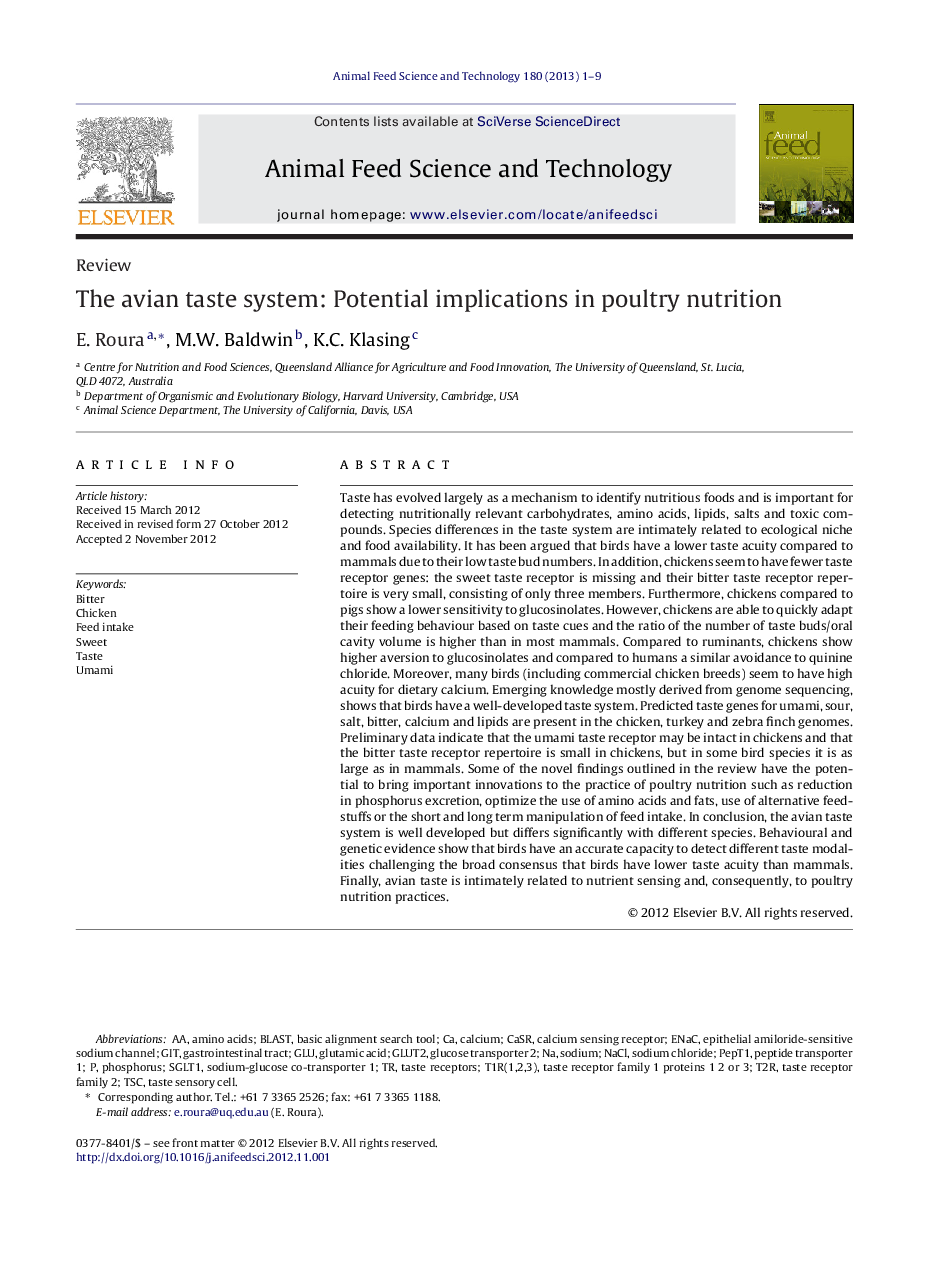| کد مقاله | کد نشریه | سال انتشار | مقاله انگلیسی | نسخه تمام متن |
|---|---|---|---|---|
| 8491959 | 1552408 | 2013 | 9 صفحه PDF | دانلود رایگان |
عنوان انگلیسی مقاله ISI
The avian taste system: Potential implications in poultry nutrition
ترجمه فارسی عنوان
سیستم طعم گوسفند: پیامدهای بالقوه در تغذیه طیور
دانلود مقاله + سفارش ترجمه
دانلود مقاله ISI انگلیسی
رایگان برای ایرانیان
کلمات کلیدی
T2RGLUT2SGLT1NaClCaSRGITTSCENaC - ENACAmino acids - اسید آمینه یا آمینو اسیدglutamic acid - اسید گلوتامیکBlast - انفجارUmami - اومامیBitter - تلخGastrointestinal tract - دستگاه گوارشSodium - سدیم Sodium chloride - سدیم کلریدSweet - شیرینPhosphorus - فسفرTaste - مزهFeed intake - مصرف غذاChicken - مُرغ خانگیpeptide transporter 1 - پاورپوینت 1Pept1 - پپت 1Calcium - کلسیمGlu - گلوglucose transporter 2 - گلوکز 2Calcium sensing receptor - گیرنده سنجش کلسیمTaste receptors - گیرنده طعم
موضوعات مرتبط
علوم زیستی و بیوفناوری
علوم کشاورزی و بیولوژیک
علوم دامی و جانورشناسی
چکیده انگلیسی
Taste has evolved largely as a mechanism to identify nutritious foods and is important for detecting nutritionally relevant carbohydrates, amino acids, lipids, salts and toxic compounds. Species differences in the taste system are intimately related to ecological niche and food availability. It has been argued that birds have a lower taste acuity compared to mammals due to their low taste bud numbers. In addition, chickens seem to have fewer taste receptor genes: the sweet taste receptor is missing and their bitter taste receptor repertoire is very small, consisting of only three members. Furthermore, chickens compared to pigs show a lower sensitivity to glucosinolates. However, chickens are able to quickly adapt their feeding behaviour based on taste cues and the ratio of the number of taste buds/oral cavity volume is higher than in most mammals. Compared to ruminants, chickens show higher aversion to glucosinolates and compared to humans a similar avoidance to quinine chloride. Moreover, many birds (including commercial chicken breeds) seem to have high acuity for dietary calcium. Emerging knowledge mostly derived from genome sequencing, shows that birds have a well-developed taste system. Predicted taste genes for umami, sour, salt, bitter, calcium and lipids are present in the chicken, turkey and zebra finch genomes. Preliminary data indicate that the umami taste receptor may be intact in chickens and that the bitter taste receptor repertoire is small in chickens, but in some bird species it is as large as in mammals. Some of the novel findings outlined in the review have the potential to bring important innovations to the practice of poultry nutrition such as reduction in phosphorus excretion, optimize the use of amino acids and fats, use of alternative feedstuffs or the short and long term manipulation of feed intake. In conclusion, the avian taste system is well developed but differs significantly with different species. Behavioural and genetic evidence show that birds have an accurate capacity to detect different taste modalities challenging the broad consensus that birds have lower taste acuity than mammals. Finally, avian taste is intimately related to nutrient sensing and, consequently, to poultry nutrition practices.
ناشر
Database: Elsevier - ScienceDirect (ساینس دایرکت)
Journal: Animal Feed Science and Technology - Volume 180, Issues 1â4, 15 March 2013, Pages 1-9
Journal: Animal Feed Science and Technology - Volume 180, Issues 1â4, 15 March 2013, Pages 1-9
نویسندگان
E. Roura, M.W. Baldwin, K.C. Klasing,
